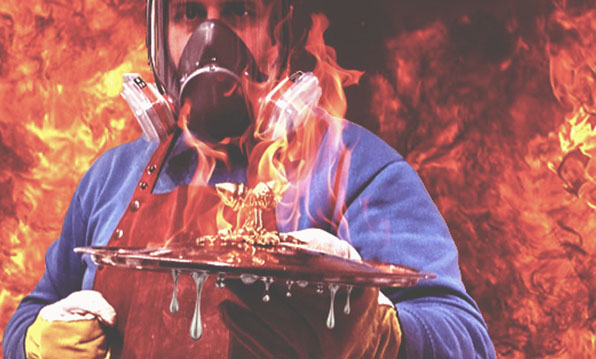SHOULD I DO IT AT HOME?
In this article we would like to address an important question that we at Copper Tinner hear every now and again – "Can I do it myself?"

The short answer is Yes, you can. Bearing in mind, of-course, that you also can make your own cutlery, fix plumbing and run electrical wiring in your house, change the power steering pump on your car and much more. The main question here is whether the outcome is going to be worth the time and money invested in the project.
First, lets break this down into steps required to complete the job at home:
-
Step 1 – Learning The Process:
This should always be your first step, to make sure you have the right knowledge and obtain the suitable tools ahead of time, not to run into a full stop in the middle of the process. -
Step 2 – Buying the Right Tools:
While your cooking stove is great for preparing delicious meals, it might not be as good for evenly heating the entire body of the pot, resulting in cracking/chipping layer of tin. Tin melts at 231-232°C (449°F) and this temperature must be achieved throughout the pot before applying the tin to ensure proper, long-lasting results. -
Step 3 – The Good, the Bad and the Ugly
To achieve proper outcome, you will need to source good, high purity tin and food-safe flux. Please DO NOT consider using tin and flux sold in local hardware stores for tinning cookware. They are mostly meant for applications like bonding copper/brass pipes and are applied externally due to their lead and other metal content. The long-term adverse health effects of using these alloys in food production can be devastating.
You want to grab a reliable respirator, as the chemicals used in the process of cleaning the copper and tinning it are quite corrosive when inhaled (ex. Degreasers, Acids, Flux etc.) and can result in upper respiratory tract irritation, leading to laryngeal edema, laryngeal spasm, and asphyxia as well as, if ingested, can cause severe corrosive injury to the mouth, throat, esophagus, and stomach.
A good pair of heatproof gloves to protect your hands is also a must. Let’s face it, 232°C is not going to feel pleasant on your skin. Besides the above mentioned chemicals can cause corrosive injuries to the exposed tissues.
A fire extinguisher must also be present in your workshop, as one can never be careful enough when working with open fire. Raw cotton/linen used in the process of applying the layer of tin can easily catch fire in the process.
Summary
Surely, tinning copper cookware is no rocket science. It is fairly simple and can be done by anyone eager to learn the art. The question remains – is the outcome going to be worth the time and money invested in the project.
To answer this you need to ask yourself – do I want to learn a new profession and have the necessary tools for this purpose, or am I just trying to save money on a single project? If you are considering learning a new profession, we highly encourage you to learn the art of tinning, as, just like any art, the result of your effort will be quite gratifying. Copper Tinner offers Tinning Classes where students can learn the traditional tinning method, safety standards, as well as knowledge of tools and products required for proper application to achieve long-lasting results.
If you only want to do this to save money on a single project, sometimes trusting a trained professional is the choice that can save you precious time and money, as well as help avoid unnecessary frustration (a lot of our re-tinning requests come from customers that tried). Unless, of-course, you cannot live without 232°C burns and respiratory disease, and have an irresistible chemical fume addiction.
No matter what choice you make, Copper Tinner is here to help.
